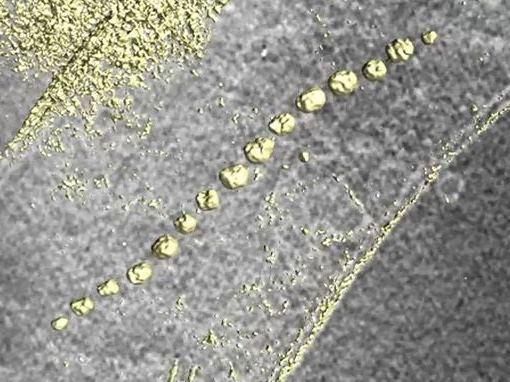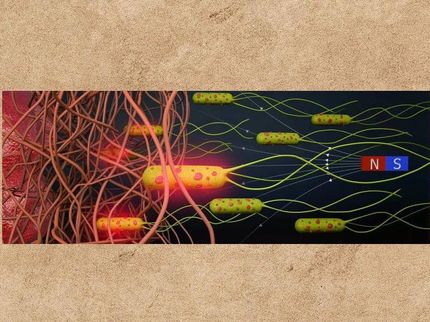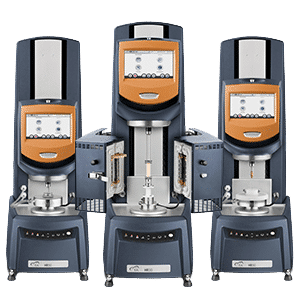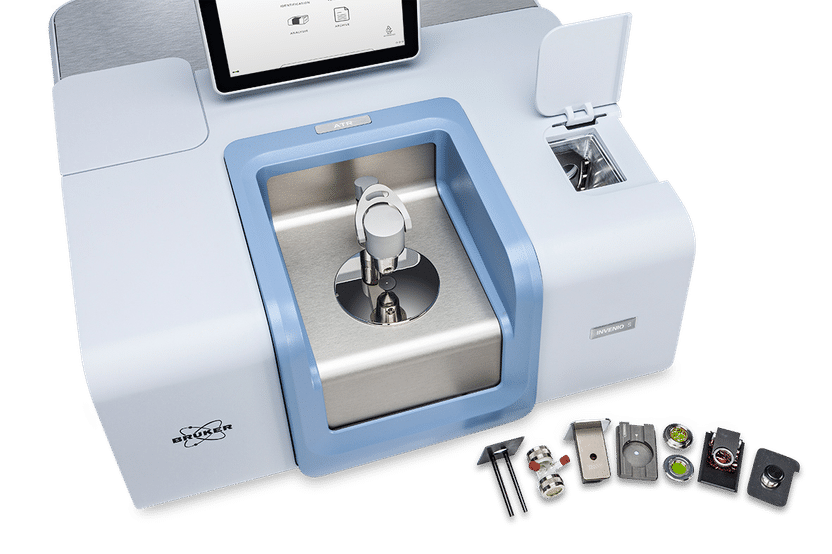How the internal compass is constructed in magnetotactic bacteria
magnetotactic bacteria are usually found in freshwater and marine sediments. One species, Magnetospirillum gryphiswaldense, is easily cultivated in the lab - with or without magnetic nanoparticles in their interior depending on the presence or absence of iron in the local environment. "So these microorganisms are ideal test cases for understanding how their internal compass is constructed", explains Lourdes Marcano, a PhD student in physics at Universidad del Pais Vasco in Leioa, Spain.

The magnetosomes form a chain inside the bacteria's cell shows the electron cryotomography (ECT).
10.1039/C7NR08493E
Chain of magnetic nanoparticles form compass
Magnetospirillum cells contain a number of small particles of magnetite (Fe3O4), each approx. 45 nanometers wide. These nanoparticles, called magnetosomes, are usually arranged as a chain inside the bacteria. This chain acts as a permanent dipole magnet and is able to passively reorient the whole bacteria along the Earth's magnetic field lines. "The bacteria exist preferentially at the oxy/anoxy transition zones", Marcano points out, "and the internal compass might help them to find the best level in the stratified water column for satisfying their nutritional requirements." The Spanish scientists examined the shape of the magnetosomes and their arrangement inside the cells using various experimental methods such as electron cryotomography.
Isolated chains examined at BESSY II
Samples of isolated magnetosome chains were analysed at BESSY II to investigate the relative orientation between the chain's direction and the magnetic field generated by the magnetosomes. "Current methods employed to characterise the magnetic properties of these bacteria require sampling over hundreds of non-aligned magnetosome chains. Using photoelectron emission microscopy (PEEM) and X-ray magnetic circular dichroism (XMCD) at HZB, we are able to "see" and characterise the magnetic properties of individual chains", explains Dr. Sergio Valencia, HZB. "Being able to visualise the magnetic properties of individual magnetosome chains opens up the possibility of comparing the results with theoretical predictions."
Helical shape
Indeed, the experiments revealed that the magnetic field orientation of the magnetosomes is not directed along the chain direction, as assumed up to now, but is slightly tilted. As the theoretical modelling of the Spanish group suggests, this tilt might explain why magnetosome chains are not straight but helical in shape.
Outlook: Nature as a model
A deeper understanding of the mechanisms determining the chain shape is very important, the scientists point out. Nature's inventions could inspire new biomedical solutions such as nanorobots propelled by flagella systems in the direction provided by their magnetosome chain.
Original publication
Orue, I. and Marcano, L. and Bender, P. and Garcia-Prieto, A. and Valencia, S. and Mawass, M. A. and Gil-Carton, D. and Alba Venero, D. and Honecker, D. and Garcia-Arribas, A. and Fernandez Barquin, L. and Muela, A. and Fdez-Gubieda, M. L.; "Configuration of the magnetosome chain: a natural magnetic nanoarchitecture"; Nanoscale; 2018
Original publication
Orue, I. and Marcano, L. and Bender, P. and Garcia-Prieto, A. and Valencia, S. and Mawass, M. A. and Gil-Carton, D. and Alba Venero, D. and Honecker, D. and Garcia-Arribas, A. and Fernandez Barquin, L. and Muela, A. and Fdez-Gubieda, M. L.; "Configuration of the magnetosome chain: a natural magnetic nanoarchitecture"; Nanoscale; 2018
Topics
Organizations
Other news from the department science

Get the analytics and lab tech industry in your inbox
By submitting this form you agree that LUMITOS AG will send you the newsletter(s) selected above by email. Your data will not be passed on to third parties. Your data will be stored and processed in accordance with our data protection regulations. LUMITOS may contact you by email for the purpose of advertising or market and opinion surveys. You can revoke your consent at any time without giving reasons to LUMITOS AG, Ernst-Augustin-Str. 2, 12489 Berlin, Germany or by e-mail at revoke@lumitos.com with effect for the future. In addition, each email contains a link to unsubscribe from the corresponding newsletter.



























































